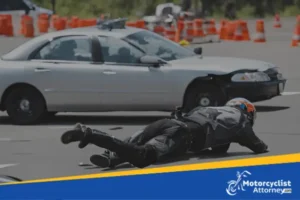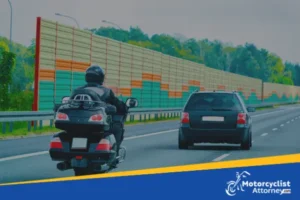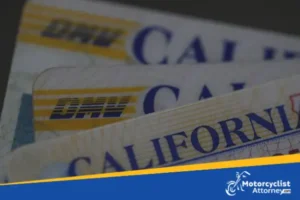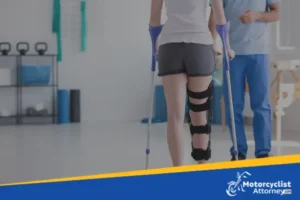Motorcycle Accident in California: Hotspot Areas to Approach with Caution
California is known for its beautiful landscapes and great weather, making it a popular destination for motorcycle enthusiasts. However, motorcycle accidents in California are still prevalent.
Let’s explore these locations and discuss possible reasons for the elevated accident rates, as well as safety strategies to help riders navigate these hotspots safely.
Injured in a motorcycle accident?
Los Angeles
Los Angeles has heavy traffic, complex road systems, and a large number of distracted drivers. Additionally, the southbound I-5 (Interstate 5) between Euclid Avenue to Interstate-605 experiences one of the worst congestion, not only in California but in the whole country. Such bumper-to-bumper traffic can lead to motorcyclists getting caught in tight spaces, resulting in accidents. According to the California Office of Traffic Safety (OTS), there were 65,377 in 2020. The report states that 3262 of these incidents involve motorcycle accidents in this California city, including severe injuries and traffic fatalities.
Culver City
Culver City is part of the Los Angeles metropolitan area and shares some of the same traffic and road infrastructure challenges. Additionally, intersections within the city can be prone to accidents.About 5% of its vehicular accidents in 2020 involve motorcycles.

Sacramento
Sacramento experiences heavy traffic, especially during rush hours. Riders often have to contend with changing weather conditions as well. There are 9,966 motorcycle incidents in 2020, including the motorcycle accident fatalities and injuries.
The US Highway 50 in Sacramento, which stretches from Drever St in West Sacramento to 59th St and Northgate Blvd, is one of the most tricky roads in the area. Also known as the Capital City Freeway, this five-mile section stood out as the only other area with more accidents and road mishaps than other highways in the county.
Visalia
Visalia and its surrounding areas is known for its agricultural landscapes. As a result, you may encounter rural roads that are narrower and less frequently maintained than urban streets. These roads often wind through farmland and can sometimes be less predictable in terms of surface quality.
OTS reports that in 2020, despite having mostly non-busy roads, Visalia recorded 453 minor and fatal crashes, including motorcycle incidents.
Bakersfield
Bakersfield is renowned for its hot and dry climate. Summers in Bakersfield can be scorching, with temperatures often exceeding 100 degrees Fahrenheit. This hot weather can create challenging riding conditions for motorcyclists and bicyclists.
Moreover, Bakersfield is a bustling city with a significant volume of traffic. The traffic conditions can vary depending on the time of day and the specific areas you’re traveling through. In 2020, about 1960 motor vehicle crashes were reported in the city.
San Pedro
San Pedro, like many areas within the greater Los Angeles region, experiences traffic challenges due to its urban setting and the high population density of the surrounding metropolitan area. During peak commuting hours, traffic congestion can be significant on major roadways and highways leading in and out of San Pedro.
Injured in a motorcycle accident?
Enhancing Motorcycle Riding Safety in California
Motorcycle enthusiasts in California, whether cruising on highways, navigating bustling commercial streets, or venturing into rural areas with potential animal hazards, must prioritize safety. Here are tips to improve motorcycle riding safety across these diverse environments:
Highway Safety
- Protective Gear: Always wear proper protective gear, including a DOT-approved helmet, gloves, jackets, and riding boots. Safety gear significantly reduces the risk of injury during highway rides.
- Lane Positioning: Ride defensively by positioning yourself in a way that maximizes visibility and minimizes blind spots for other drivers. Avoid riding in a vehicle’s blind spot.
- Maintain a Safe Speed: Adhere to posted speed limits and adjust your speed according to traffic and weather conditions. Highways often require higher speeds, but never exceed your comfort and skill level.
- Regular Maintenance: Keep your motorcycle in good condition with regular maintenance checks. Tires, brakes, lights, and fluids should be inspected and maintained for optimal performance.
- Stay Alert: Long highway rides can be tiring. Take frequent breaks to rest and refocus. Avoid distractions like phones and maintain a clear mind.
Busy Commercial Streets
- Anticipate Traffic Patterns: Expect sudden stops and lane changes from vehicles in congested areas. Stay vigilant and maintain a safe following distance.
- Filtering Cautiously: In states where lane splitting is legal, do so carefully and at low speeds. Be aware of vehicle mirrors and drivers’ blind spots.
- Signal Clearly: Use turn signals and hand signals to communicate your intentions to other drivers. Making your movements predictable is key in busy traffic.
- Watch for Pedestrians: Be cautious at crosswalks and pedestrian-heavy areas. Pedestrians might not always notice or hear approaching motorcycles.
Rural Roads with Animal Hazards
- Reduce Speed: Rural roads often have wildlife crossing areas. Slow down to increase reaction time when encountering animals.
- Stay Centered: Ride in the center of your lane to give yourself more room to maneuver in case an animal suddenly appears. Maintain a safe following distance from vehicles ahead.
- Use High Beams: When riding at night or in low light conditions, use high beams when it’s safe to do so. This helps spot animals’ eyes reflecting light.
- Stay Calm: If an animal crosses your path, avoid sudden swerves or panic braking. Gradually slow down and steer around the animal when it’s safe to do so.
- Be Extra Cautious at Dawn and Dusk: Wildlife is often more active during dawn and dusk. Exercise extreme caution during these times.
- Scenic Stops: Enjoy the scenery but pull over safely if you want to take pictures or admire the view. Don’t stop abruptly on the road.
In all these locations, the importance of defensive driving cannot be overstated. Motorcycle riders should assume that other drivers may not see them and always ride defensively. Key safety tips include wearing appropriate protective gear (helmet, gloves, jackets), obeying traffic laws, avoiding distractions, and continuously improving riding skills through training courses.
What to Do When Involved in an Accident?
Despite your best efforts to ride safely, accidents can still happen. Being prepared and knowing what to do after a motorcycle accident can make all the difference in minimizing injuries and ensuring a swift response.
- Check for injuries: Assess your own injuries and those of any passengers. Ensure everyone is conscious and responsive.
- Move to safety: If possible, move yourself and your motorcycle to a safe location away from the unsafe lane to prevent further accidents or injuries.
- Call for help and seek immediate medical attention: Dial 911 or emergency services immediately to report the motorcycle crash. Provide your exact location and the number of injured parties. Regardless of the severity of your injuries, seek medical help promptly. Some injuries may not be immediately apparent, and early medical treatment is essential.
- Exchange information: Exchange contact and insurance information with other involved parties, including drivers, passengers, and witnesses. Document their names, phone numbers, license plate numbers, and insurance details.
- Document the scene: Use your smartphone or a camera to take photos and videos of the accident scene, property damage, road conditions, and any visible injuries. This documentation can be crucial for insurance claims and legal purposes.
- Preserve Evidence: Keep all records related to the accident, including medical expense reports, repair estimates, and correspondence with insurance companies. These documents can aid in the claims process.
- Consult with an experienced motorcycle accident attorney: If the accident involves significant injuries or disputes, consider consulting a personal injury lawyer, specializing in handling motorcycle accident injuries and fatalities. They can help protect your rights, guide you through legal proceedings, and get you the financial compensation you deserve.
Ride safe and enjoy!
Remember, motorcycle safety is a continuous learning process. Consider enrolling in advanced riding courses and stay updated on state and local regulations. By prioritizing safety and being aware of the unique challenges posed by highways, urban streets, and rural roads, riders can enjoy their journeys and possibly lower the motorcycle accident rate in california.If you have been involved in any accident during your trip, we are here to help. Motorcyclist Attorney has a team of legal and medical experts to help you get through an accident. Call us at (844) 284-9437 for a free consultation.




